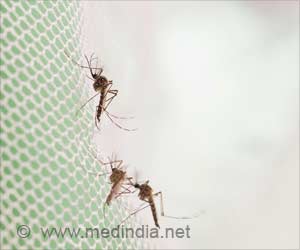UV rays and unhealthy habits such as consuming bad meat, drinking and spicy food are exposing the local residents of Ladakh to skin and Gastrointestinal cancer, finds a new study.

‘People have been found to consume meat which has been long stored, they also have been found to eat spicy food, drink too many hot drinks and smoke; all of which are known to increase the risk of GI cancer’





Twenty-four of the experts attended a five-day medical camp organized here by Ashoka Mission and SNM Hospital that focused on providing free medical aid to the people of the Leh and Kargil belt, especially those living in far-off villages and belonging to financially poor backgrounds. The camp -- now in its 25th year -- saw more than 2,700 patients attending and getting examined. "Out of 100 patients, 60-65 cases are of GI cancer. Unfortunately, in this belt, there is no proper record or data of cases of cancer. The only numbers we get are from the hospital," Dr. Atul Sharma, Oncologist at the Dr. B.R.A Institute-Rotary Cancer Hospital (BIRCH) at AIIMS, told this visiting IANS correspondent.
Dr. Sharma said the rise in GI cancer is mostly because of the unhealthy and sedentary lifestyle which includes consumption of stored meat and hot beverages.
"To keep their body warm, especially during the harsh winter, the people consume meat which has usually been stored for long periods. Their dishes are even spicy. Also consumption of too many hot beverages, smoking and drinking further escalate the causes of GI cancer," Dr. Sharma added.
"Liver cancer from Hepatitis B is also a concern in this belt. There have been few cases which have come up, and we are doing further research on the reasons behind it," he added.
Advertisement
"People are not aware of the early symptoms. There is a major lack of awareness in the region. Ninety percent of the cases that came to me was in advanced stages. There is not much access to cancer treatment, and even the proper drugs are not available," Dr. Sharma noted.
Advertisement
Dr. Kaushal K. Verma, a Dermatologist at AIIMS, stated that workers exposed to too much sunlight are also at higher risk of contracting skin cancer.
"The ultraviolet rays are too strong here. even if the locals are properly covered or use umbrellas, it won’t work much here," he commented.
Dr. Verma noted that the early symptoms of skin cancer are small patches which are mostly ignored.
"People don’t take these marks seriously because they are usually small in size. Also, it often becomes difficult for an individual to distinguish between normal skin disease and the cancer mark," he added.
Not just exposure to the environment, Dr. Verma cited food habits, vitamin deficiency and even pollution in the belt as reasons for the rise in skin cancer cases.
"If skin cancer is not treated at an early stage, it can be life-threatening. Women in the belt are more into outdoor activities than men, so they face the danger of getting diagnosed with skin cancer, especially after the age of 40," he said.
Apart from skin cancer, Dr. Verma said locals are also at high risk in terms of several other skin problems like eczema and facial pigmentation, which are often difficult to treat as well.
"Most of the year it is extremely cold and dry. And when it is sunny, the rays are very strong -- enough to damage the skin. This escalates skin problems," he noted.
Source-IANS












